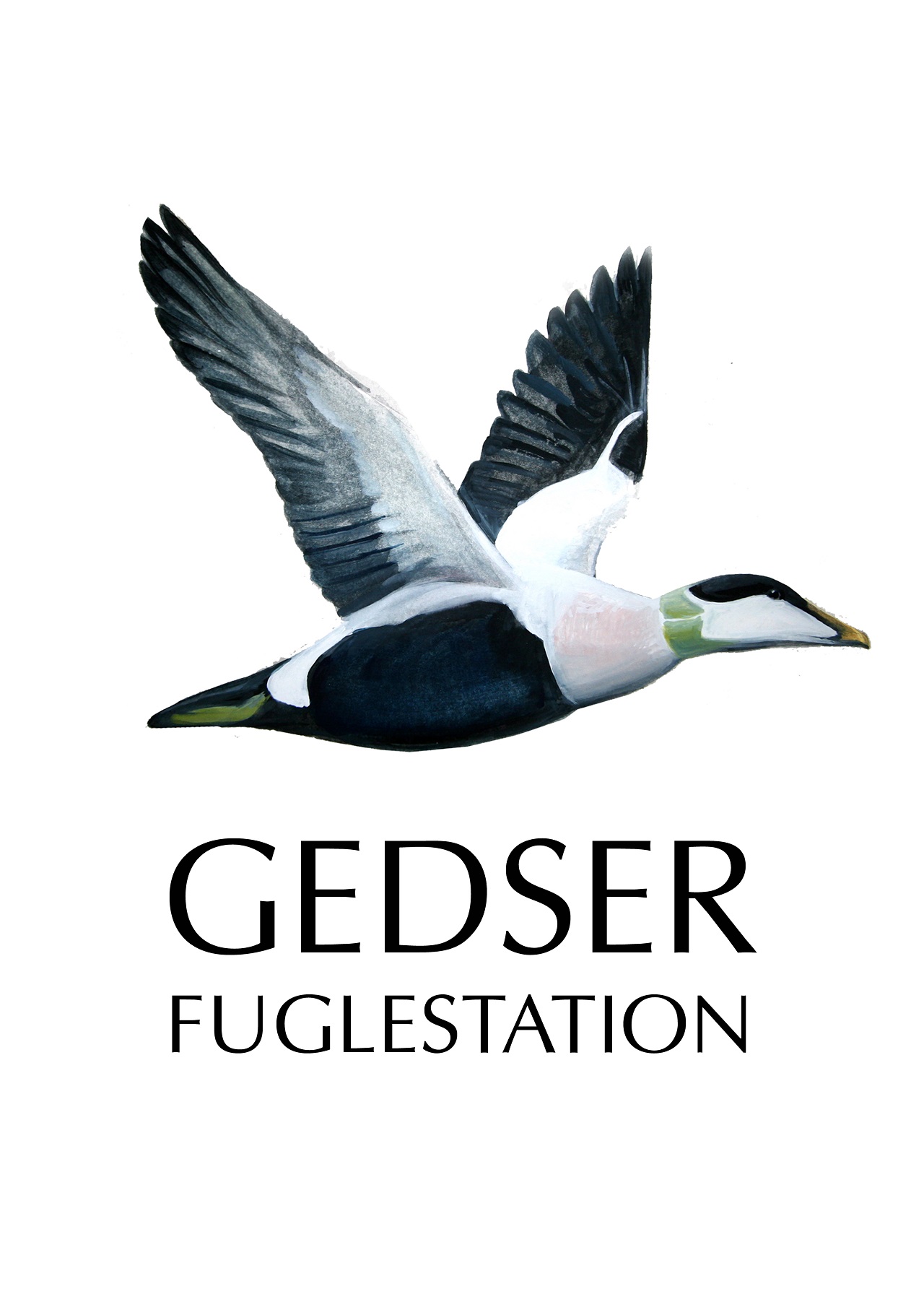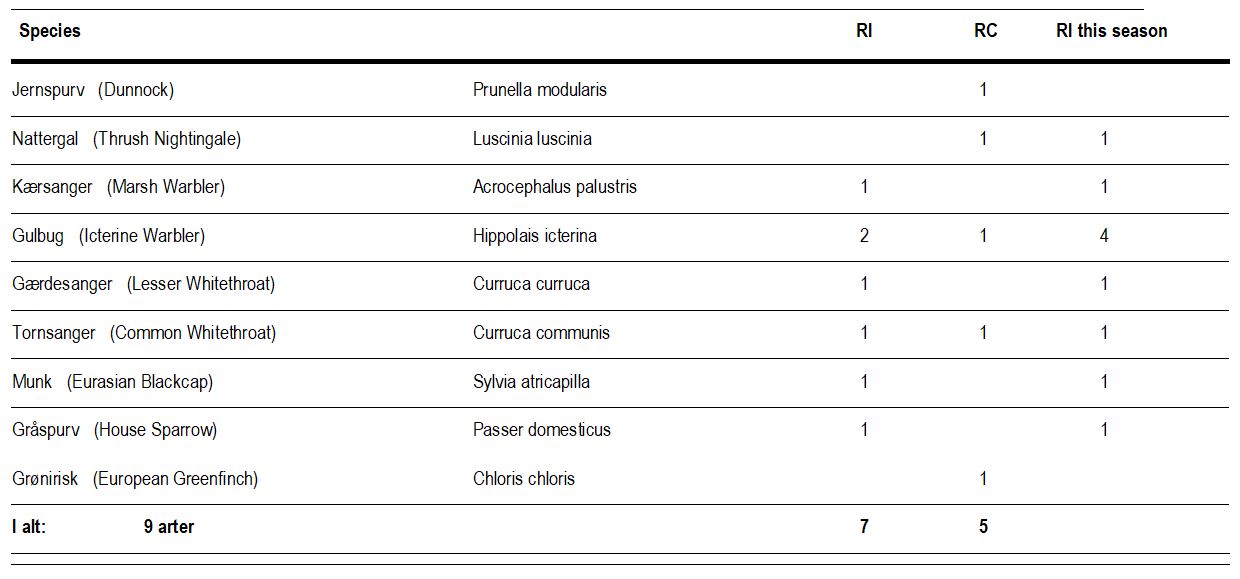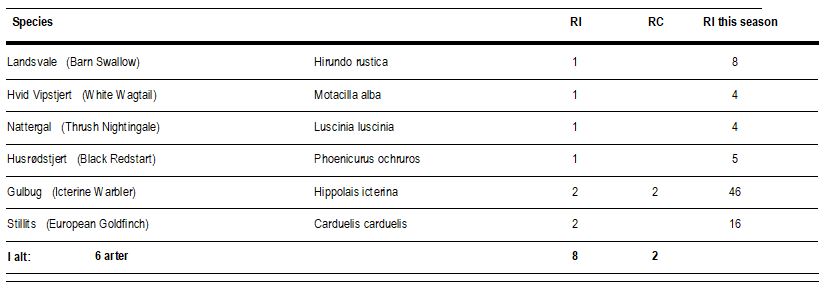Gedser Fuglestation Blog
Her på Gedser Fuglestations blog bringes korte nyheder i dagbogsformat om hændelser på fuglestationen.
Se indlæg fra måned: jan. (10)feb. (18)mar. (31)apr. (26)maj (31)juni (30)juli (23)aug. (31)sept. (30)okt. (31)nov. (30)dec. (20)
A migrant fresh from the nest
The ringing:
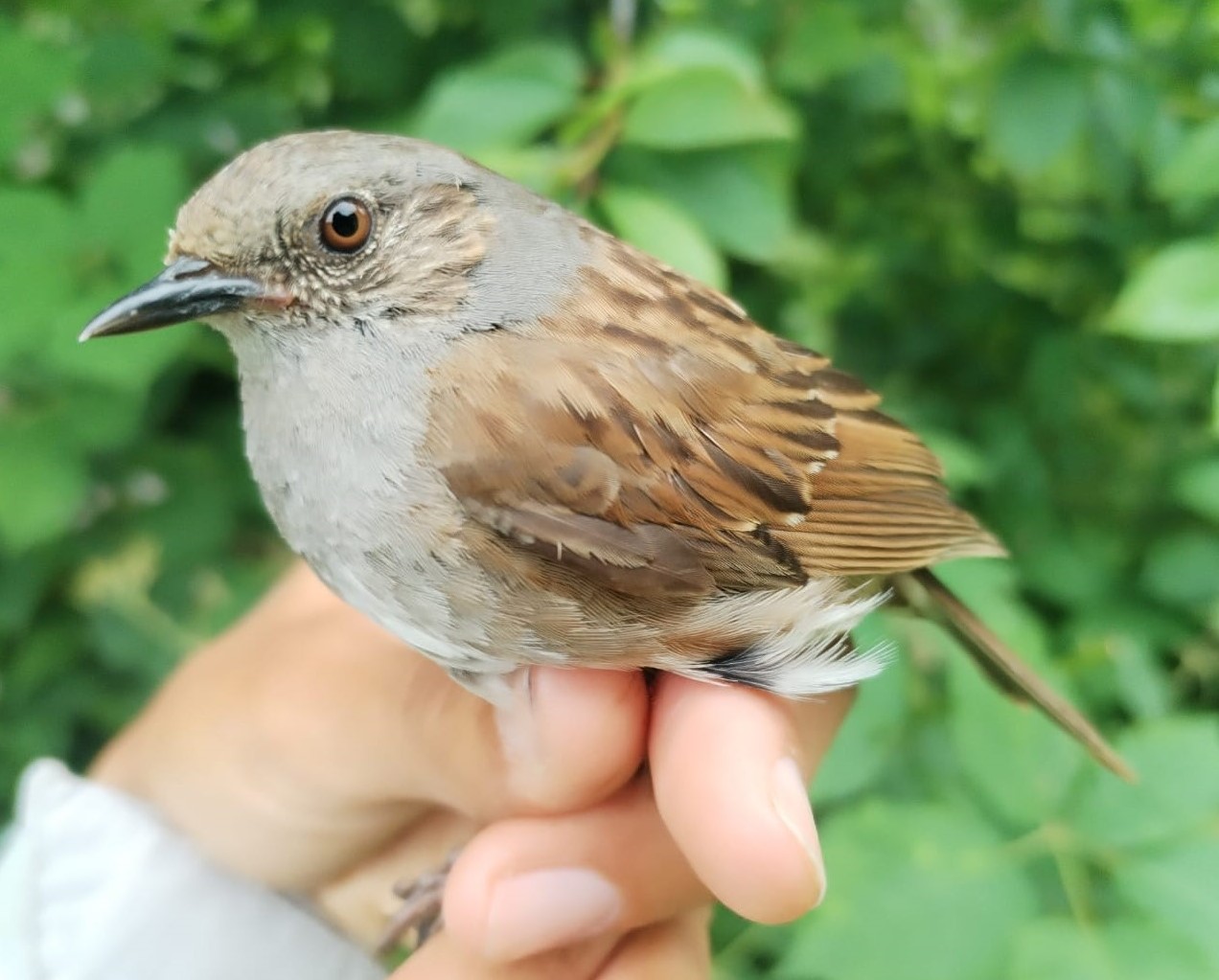
A recapture Dunnock "Jernspurv" from the morning
No rain this morning, that was good news, but it was a bit windy and cold. I caught 12 birds, 7 of them new and five recaptures. At the moment, my highlights are the 1K birds, these were a young House Sparrow “Gråspurv” and a very young Icterine Warbler “Gulbug”, that looked like it was not out of the nest for long. The Icterine Warbler “Gulbug” is a very noisy and vocal species. This little bird did not show this behaviour yet and stayed calm and quiet until it was released. I am sure, it will learn soon. And although this might be annoying for the ringer, it is just a good thing. Birds are wild, it is a pleasure to handle them but the most important thing is, that we just keep them for collecting our data and then let them continue their fascinating and impressive lives. Not long, maybe one and a half moth, two at maximum, and this bird will be on it´s way to Africa, without the care of its parents. We might meet it some more times in the garden until then and after, we hope to have it back here next spring.
The moth:
Windy nights do not make many moth fly, but there is always something nice in the trap or on the wall. Today, Biston betularia “Birkemåler” and Deilephila elpenor “Dueurtsværmer” were the highlights.
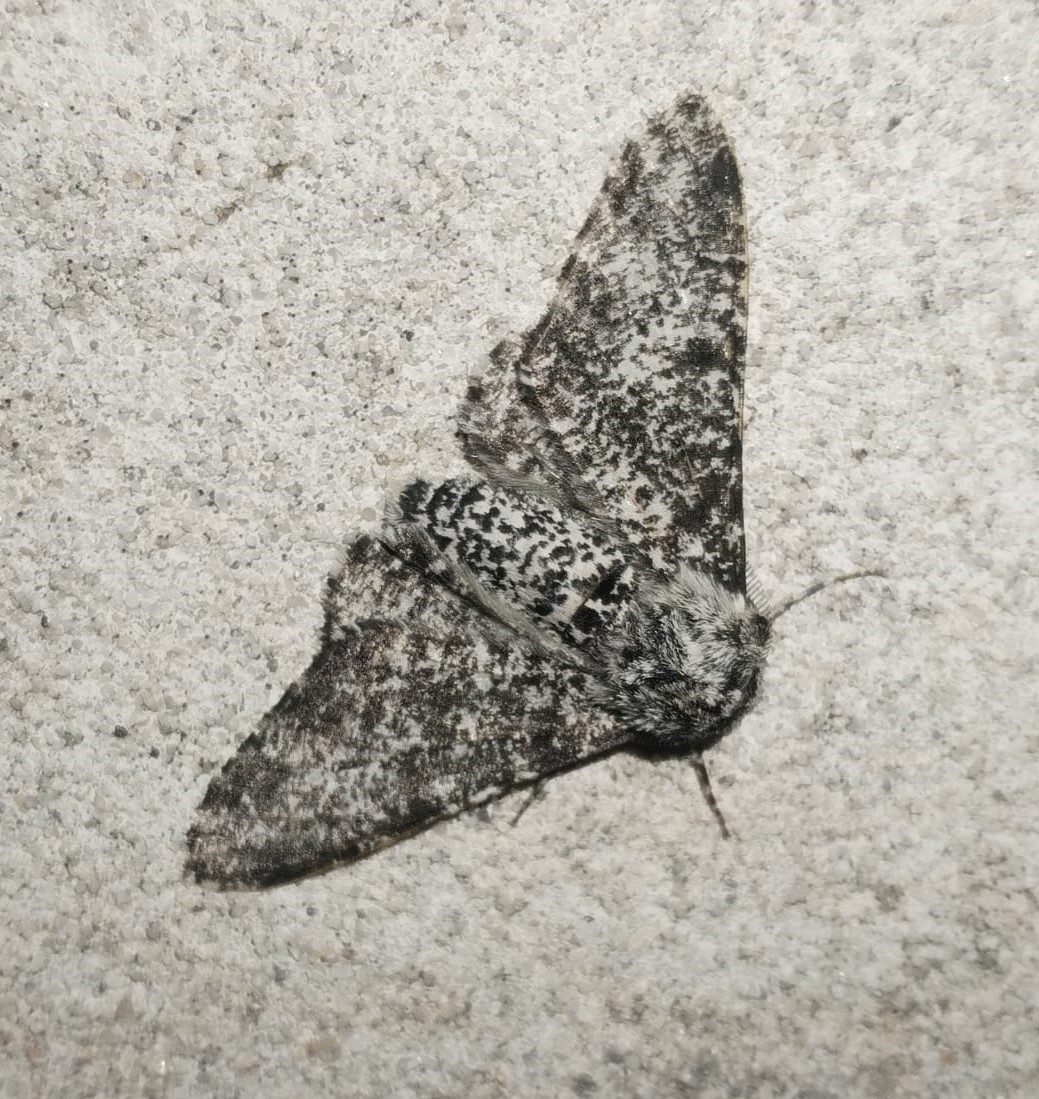
Biston betularia “Birkemåler”
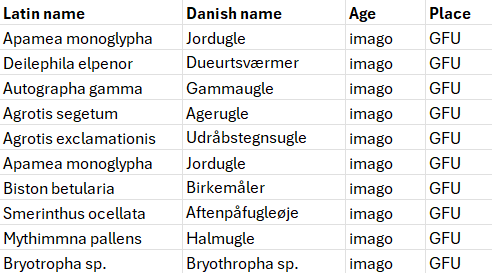
News of the station:
Today, two employees of Naturstyerlsen were here and repaired the wooden gate at the entrance of the garden. Hans came shortly to see them and helped me closing the nets.
People: Hans Lind, Hanelie Sidhu
A rainy day
The ringing:
Today I managed to catch one recapture of a Icterine Warbler “Gulbug”, that Hans ringed in 2022. Else, there was a lot of rain in the morning, so I stayed inside.
Gulbug - Icterine Warbler 0/1
The moth:
It was mainly moth species, that I already know very well in the trap and also not many, but Anania hortulata “Nædehalvmøl” was new for me and it’s a really nice moth.
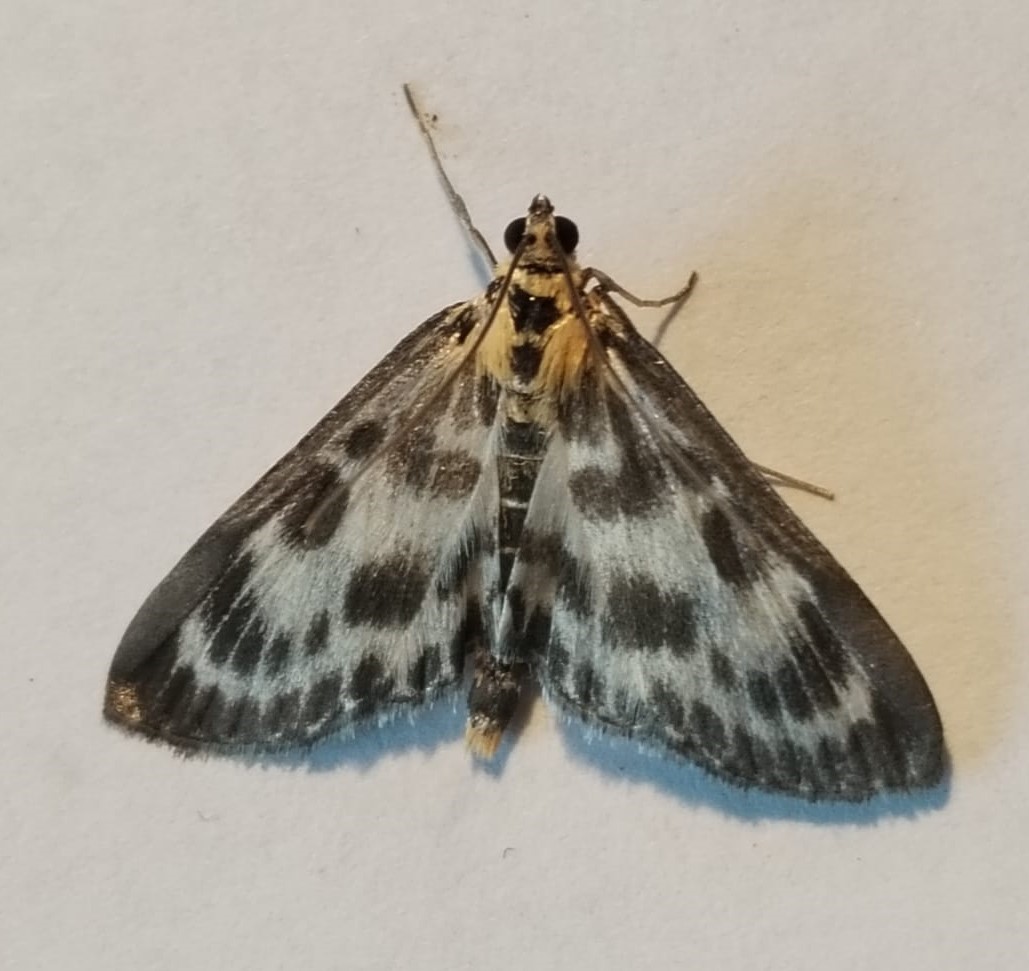
Anania hortulata “Nædehalvmøl”
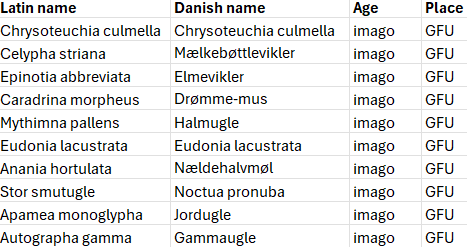
News of the station:
Later in the morning, Anne-Marie and Vibeke came to the station and cleaned the windows. Thanks to them, working together one inside and one outside of the building, the windows were soon sparkling clean and it seems as the green of the garden is even more coming into the station. This is a nice view. Also Anders and Hans came to the station, because Anders had to extract the data of the spring season which will now be send to the Zoological Museum.
People: Hans Lind, Anders Zuschlag, Anne-Marie Raith, Vibeke, Hanelie Sidhu
Pond birds
The ringing:
This morning looked good for ringing and for opening the pond nets, it was a little cloudy and shallow wind. But there were no birds at the pond in the early morning. Instead, I got a little surprise in the garden in the first round, there was a Thrush Nightingale “Nattergal” in the net. Henrik had one a few days ago, but it is a very nice species in hand. Here in Denmark, the Thrush Nightingale “Nattergal” is more common, and the Common Nightingale “Sydlig Nattergal” is quite rare, but of course, you need to pay attention. Besides appearance, wing formula and wing length, a very good characteristic to differentiate them is looking at P1. Last autumn, I ringed a few birds of both species which came at the same time, and I thought P1 to be really helpful and obvious characteristic. While it is very short in Thrush Nightingales “Nattergal”, it does not even reach the end of the primary coverts, the Common Nightingale has a very big, long P1, which is noticeably longer than the primary coverts. I took a picture to show you the short P1 of this Thrush Nightingale “Nattergal”. Unfortunately, I do not have a comparison picture of a Common Nightingale “Sydlig Nattergal”, but there is a good drawing of that in Svensons Identification Guide to European Passerines, which I can show to you instead.
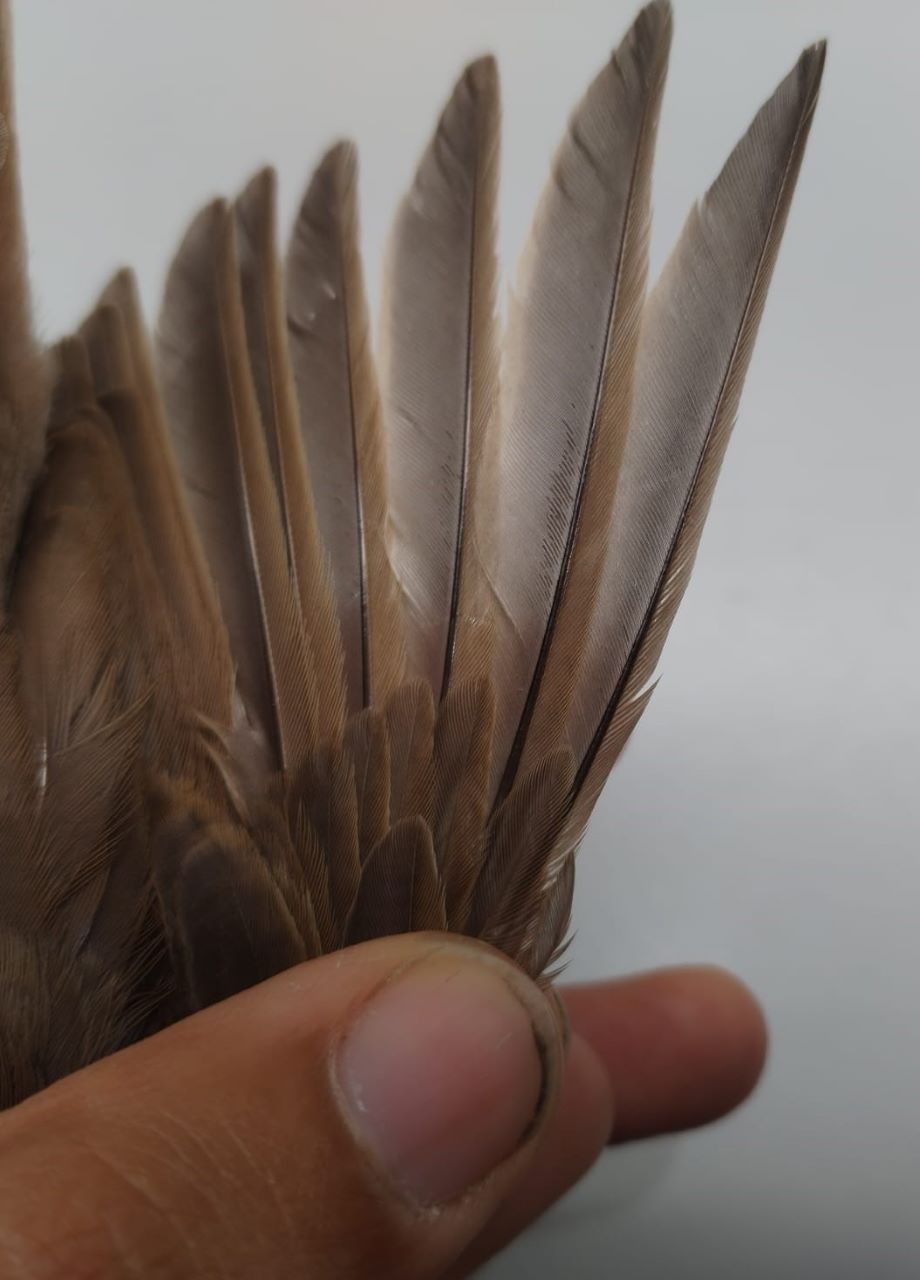
P1 Thrush Nightingale "Nattergal"
Another nice bird in the garden was a 1k Black Redstart “Husrødstjert”.
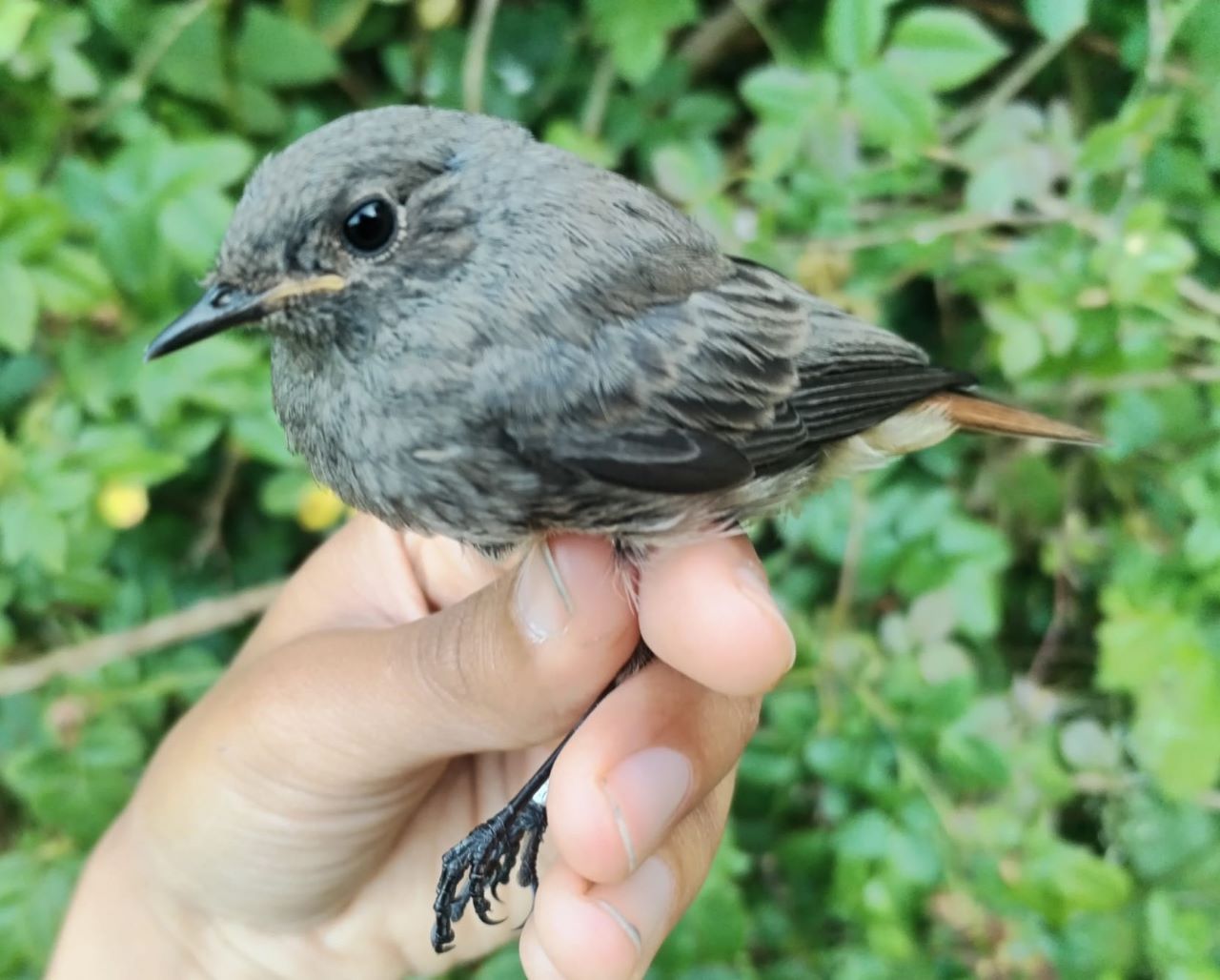
1K Husrødstjert
When the morning came to an end, I had zero rounds in the garden and thought, well, game over for today, but now, the pond got alive! The Barn Swallows “Landsvale” had arrived with their young and one of the 1k birds landed in my net.
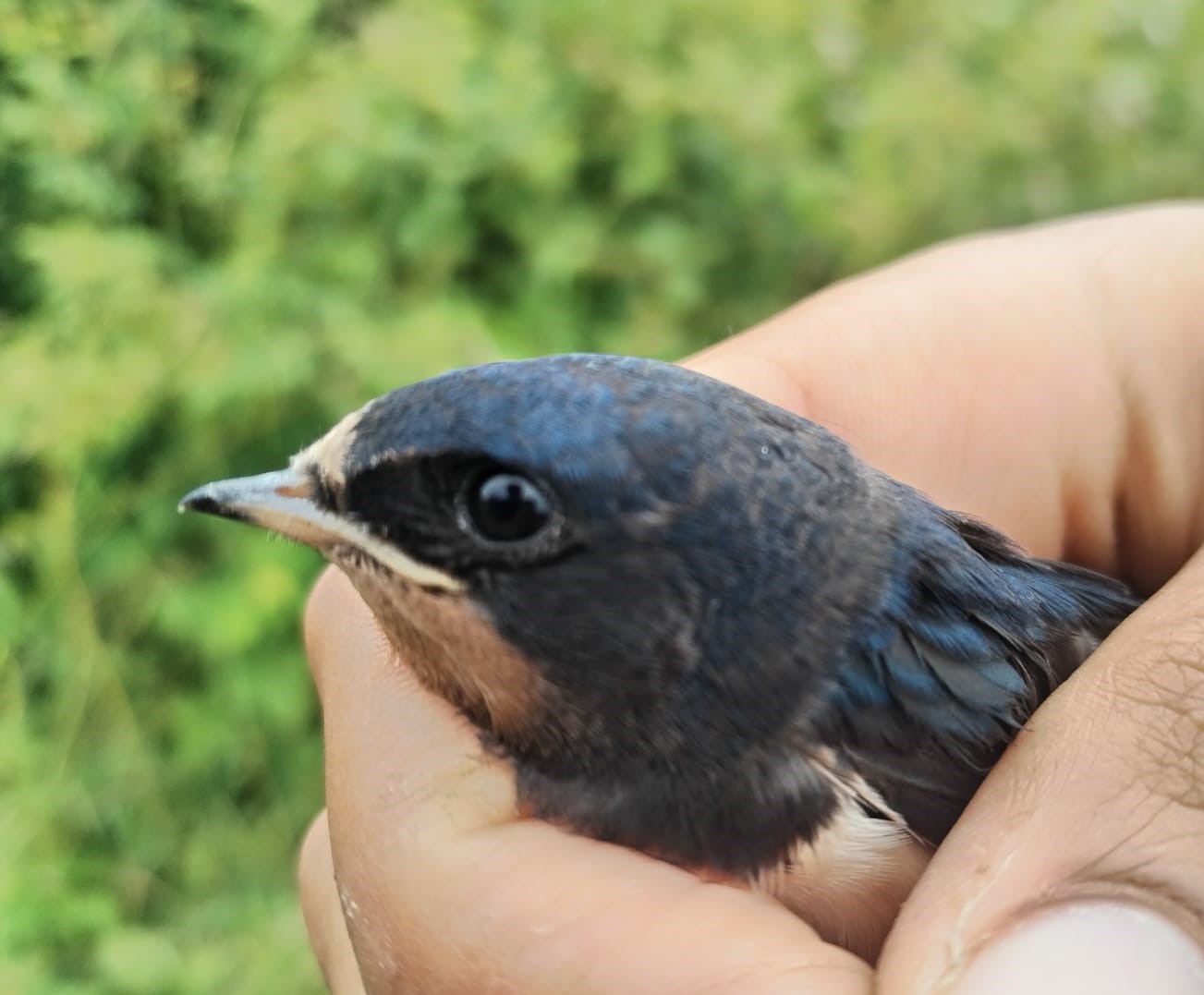
1K Landsvale
I was already confident but then I saw, that there were two 1k Stillits low in the bottom pocket of the other net. In the closing round, I found another White Wagtail “Hvid Vipstjert” in one of the pond nets, so I decided, just to close in the garden and keep the pond nets open for a bit longer. I exchanged the bottom line of one net, that was broken and went in to look at the moths. Regularly, I went to the pond, but there was nothing new. So I closed. It was a morning with very nice species in the nets!
The moths:
It was a rather good day for moths today, I had days with more, but also with fewer moths. There were also some new species in the trap. I want to show Euthrix potatoria “Græsspinder” because I got male and female in the trap today and I also had the larvae some weeks ago.

Euthrix potatoria (male top, female bottom)
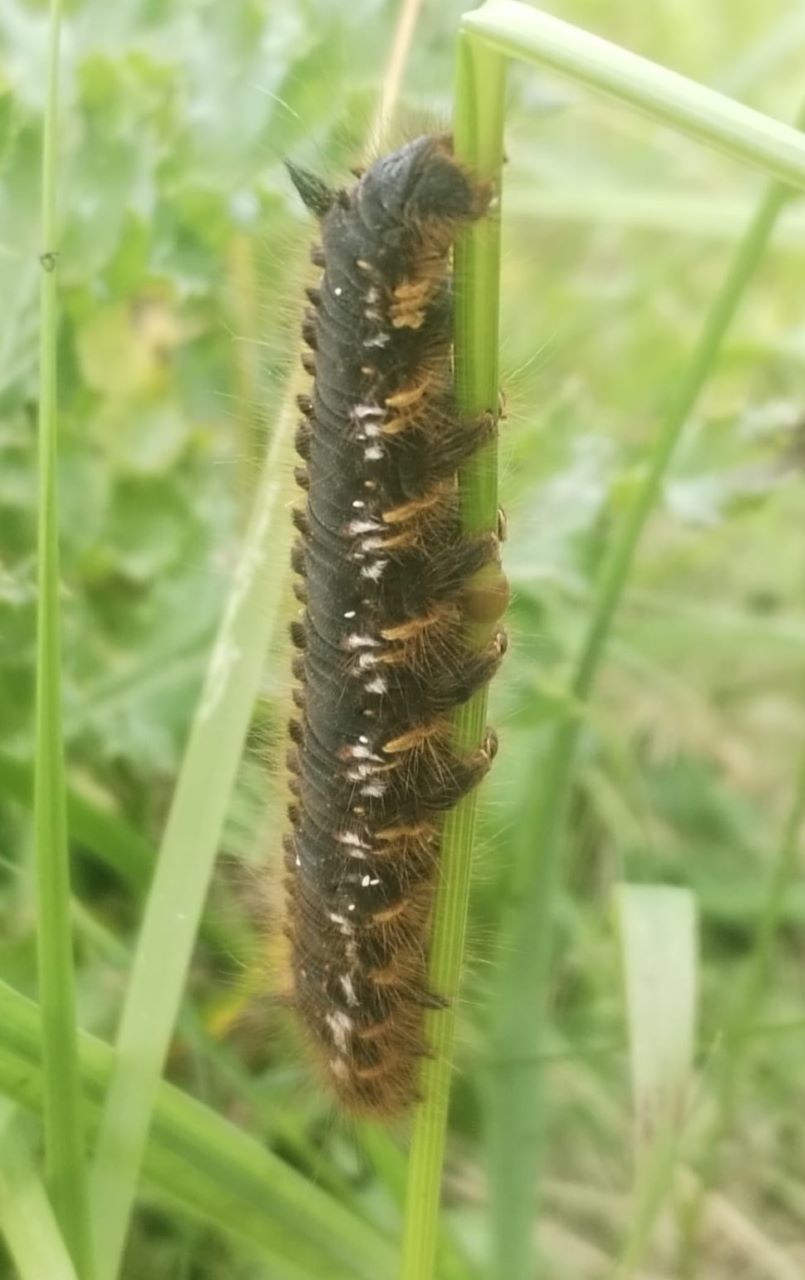
Euthrix potatoria larvae

People: Hanelie Sidhu
